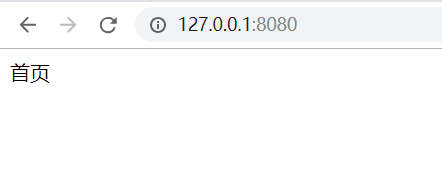SpringBoot web开发
springboot使用:
1)创建SpringBoot应用,选择需要的模块

2)SpringBoot 已经默认将这些选中的场景配置好了(之前学的自动配置功能),只需要在配置文件中指定少量配置就可以运行起来
3)自己编写业务代码
自动配置原理?
某个SpringBoot场景能为我们配置什么,能不能修改,能修改哪些配置,能不能扩展
xxxxxAutoConfiguration 帮我们给容器中自动配置组件
xxxxxProperties 配置类 来封装配置文件的内容
SpringBoot对静态资源的映射规则
@ConfigurationProperties(
prefix = "spring.resources",
ignoreUnknownFields = false
)
public class ResourceProperties {
//可以设置和静态资源有关的参数,缓存时间等
//WebMvcAutoConfiguration 类中的
public void addResourceHandlers(ResourceHandlerRegistry registry) {
if (!this.resourceProperties.isAddMappings()) {
logger.debug("Default resource handling disabled");
} else {
Duration cachePeriod = this.resourceProperties.getCache().getPeriod();
CacheControl cacheControl = this.resourceProperties.getCache().getCachecontrol().toHttpCacheControl();
if (!registry.hasMappingForPattern("/webjars/**")) {
this.customizeResourceHandlerRegistration(registry.addResourceHandler(new String[]{"/webjars/**"}).addResourceLocations(new String[]{"classpath:/META-INF/resources/webjars/"}).setCachePeriod(this.getSeconds(cachePeriod)).setCacheControl(cacheControl));
}
String staticPathPattern = this.mvcProperties.getStaticPathPattern();
if (!registry.hasMappingForPattern(staticPathPattern)) {
this.customizeResourceHandlerRegistration(registry.addResourceHandler(new String[]{staticPathPattern}).addResourceLocations(getResourceLocations(this.resourceProperties.getStaticLocations())).setCachePeriod(this.getSeconds(cachePeriod)).setCacheControl(cacheControl));
}
}
}
1) 所有/webjars/* 下的所有请求都去classpath:/META-INF/resources/webjars/ 这里边找资源
webjars:以jar包的方式 引入静态资源 https://www.webjars.org/

访问:http://127.0.0.1:8080/webjars/jquery/3.0.0/jquery.js 就能访问到jquery
2)/** 访问当前的任何资源 如果没有人处理(我理解没人处理的意思就是不是请求后台方法那种请求 没有映射到后台方法的请求)就会去找 下边这几个路径
静态资源文件夹:
"classpath:/META-INF/resources/"
"classpath:/resources/"
"classpath:/static/"
"classpath:/public/
"/" :当前项目根路径

http://127.0.0.1:8080/asserts/js/bootstrap.min.js
//WebMvcAutoConfiguration类中的方法
//欢迎页映射
@Bean
public WelcomePageHandlerMapping welcomePageHandlerMapping(ApplicationContext applicationContext) {
return new WelcomePageHandlerMapping(new TemplateAvailabilityProviders(applicationContext), applicationContext, this.getWelcomePage(), this.mvcProperties.getStaticPathPattern());
}
静态资源文件夹下的所有 index.html 页面 被"/**" 映射
http://127.0.0.1:8080 就会去找index

访问:http://127.0.0.1:8080

//WebMvcAutoConfiguration类中的方法
//配置网站图标
@Configuration
@ConditionalOnProperty(
value = {"spring.mvc.favicon.enabled"},
matchIfMissing = true
)
public static class FaviconConfiguration implements ResourceLoaderAware {
private final ResourceProperties resourceProperties;
private ResourceLoader resourceLoader;
public FaviconConfiguration(ResourceProperties resourceProperties) {
this.resourceProperties = resourceProperties;
}
public void setResourceLoader(ResourceLoader resourceLoader) {
this.resourceLoader = resourceLoader;
}
@Bean
public SimpleUrlHandlerMapping faviconHandlerMapping() {
SimpleUrlHandlerMapping mapping = new SimpleUrlHandlerMapping();
mapping.setOrder(-2147483647);
mapping.setUrlMap(Collections.singletonMap("**/favicon.ico", this.faviconRequestHandler()));
return mapping;
}
@Bean
public ResourceHttpRequestHandler faviconRequestHandler() {
ResourceHttpRequestHandler requestHandler = new ResourceHttpRequestHandler();
requestHandler.setLocations(this.resolveFaviconLocations());
return requestHandler;
}
private List<Resource> resolveFaviconLocations() {
String[] staticLocations = WebMvcAutoConfiguration.WebMvcAutoConfigurationAdapter.getResourceLocations(this.resourceProperties.getStaticLocations());
List<Resource> locations = new ArrayList(staticLocations.length + 1);
Stream var10000 = Arrays.stream(staticLocations);
ResourceLoader var10001 = this.resourceLoader;
this.resourceLoader.getClass();
var10000.map(var10001::getResource).forEach(locations::add);
locations.add(new ClassPathResource("/"));
return Collections.unmodifiableList(locations);
}
}
**/favicon.ico 图标方式的位置还是静态资源文件夹下 与 index首页一样
如果想使用自己配置的文件夹:
spring.resources.static-locations=classpath:/test/,classpath:/static2/
自己定义之后就不能使用默认的了,就需要把所有静态资源放到自己定义的路径下